Participants: Volodin I.A., Volodina E.V., Golosova O.S.
Funded Russian Foundation for Basic Research (RFBR, grant 15-04-06241) and Russian Science Foundation (RSF, grant 14-14-00237).
Acoustic communication is critically important for supporting mother-young cohesion in herds of ungulates (Volodin et al., 2011 181.pdf; Sibiryakova et al., 2015 217.pdf). A mother nurse only her own young, but olfactory recognition is only possible within 1 meter. Calls allow mother -young recognition from a distance, in the forest, in the bush, in dusk or at night. Calls provide information about emotional state, in addition to information about caller's individual identity and age (Volodin_et_al., 2009 168.pdf). To understand, which acoustic cues encode this information, we managed to investigate mother-offspring communication in Siberian wapiti. Such kind of research is possible only in semi-captive conditions, because wild hinds with calves are extremely shy and do not approach to humans closer one kilometer. Acoustic data have been collected in the Kostroma Siberian wapiti breeding centre in Middle Russia (http://kostroma-hunter.ru/).

1. The village Parfenyevo, the regional centre of the Kostroma region, Russia.
The Kostroma Siberian wapiti breeding centre located in eight kilometers from the village Parfenyevo. The Siberian wapiti (Latin name Cervus elaphus sibiricus) is one of most beautiful subspecies of red deer. In Russia, Siberian wapiti are kept in zoos of Novosibirsk, Saint-Petersburg, Abakan, Chelyabinsk and Kostroma. Siberian wapiti of the Kostroma Zoo have been obtained from the Kostroma Siberian wapiti breeding centre.
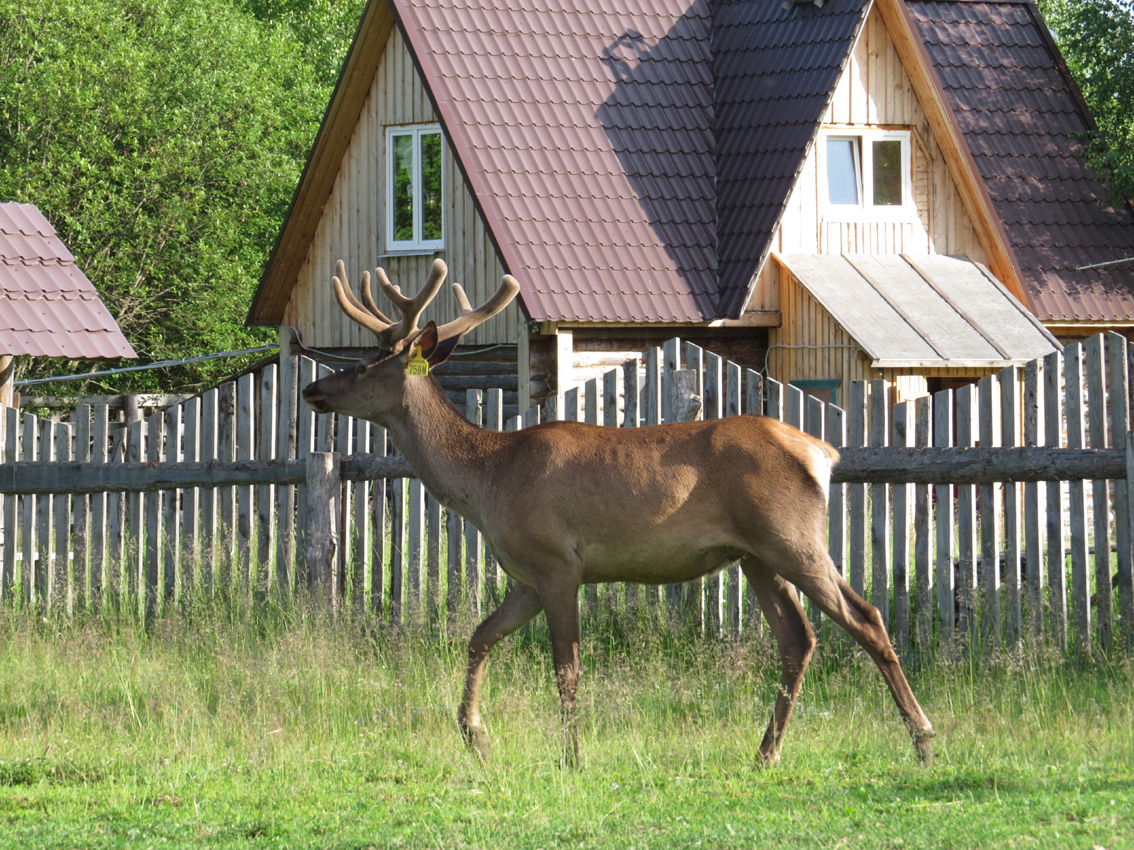
2. The Kostroma Siberian wapiti breeding centre
The Siberian wapiti is one of most important production animals in Siberia. Their velvet antlers are the source for valuable medicine. In Central Russia, this subspecies is kept only recently. The Kostroma Siberian wapiti breeding centre develop methods of adaptation and feeding of Siberian red deer to new environmental conditions. This centre is open for excursions, so everybody can see these wonderful animals and to know much about their biology. Working practice students from Moscow and Kostroma Universities acquire here the basic knowledge of animal care, enclosure construction, velvet antlers harvesting and conservation.
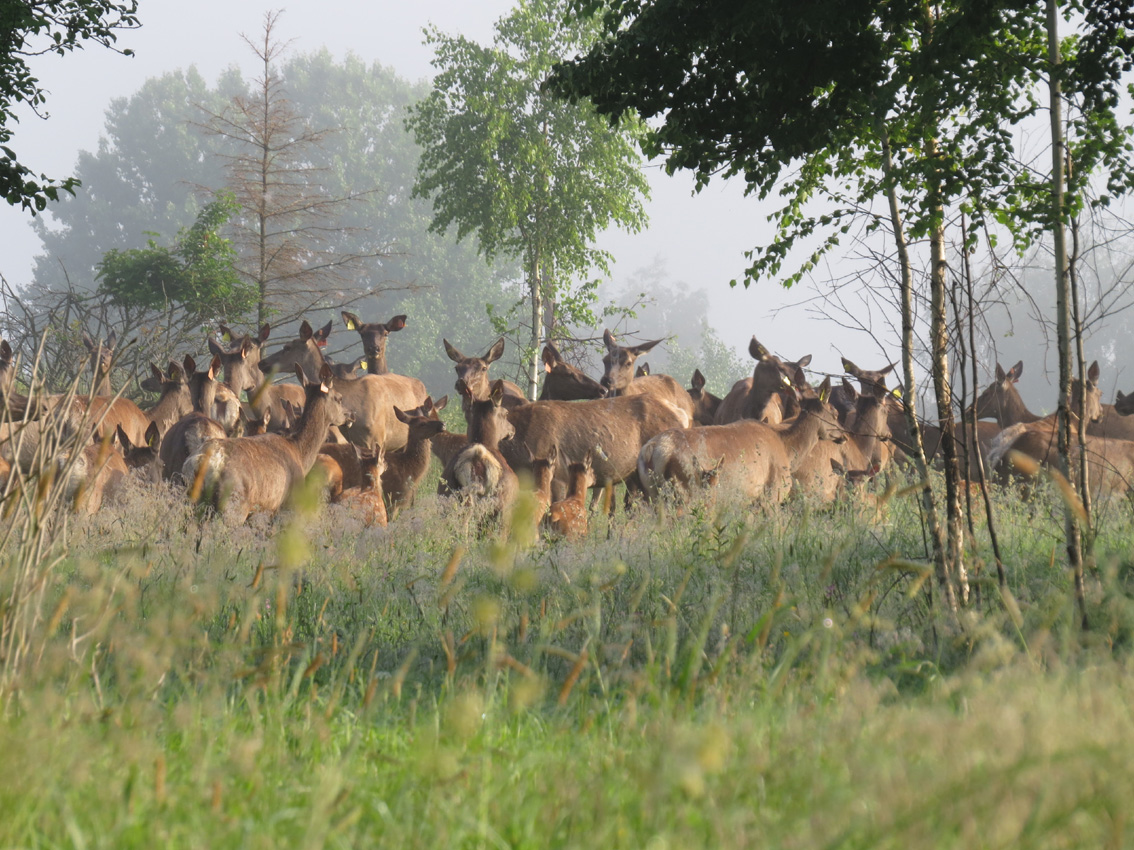
3. The herd of hinds with calves.
The bioacoustic group of Moscow Zoo and Moscow University studies in the Kostroma Siberian wapiti breeding centre rut vocal activity and acoustic communication among stags, hinds and calves. For the red deer, the acoustic communication is an important component of the reproductive behaviour. In addition, calls of all age- and sex classes are applicable as indicators of subspecies identity, what is important for avoiding unnecessary interspecies hybridization during the captive breeding.
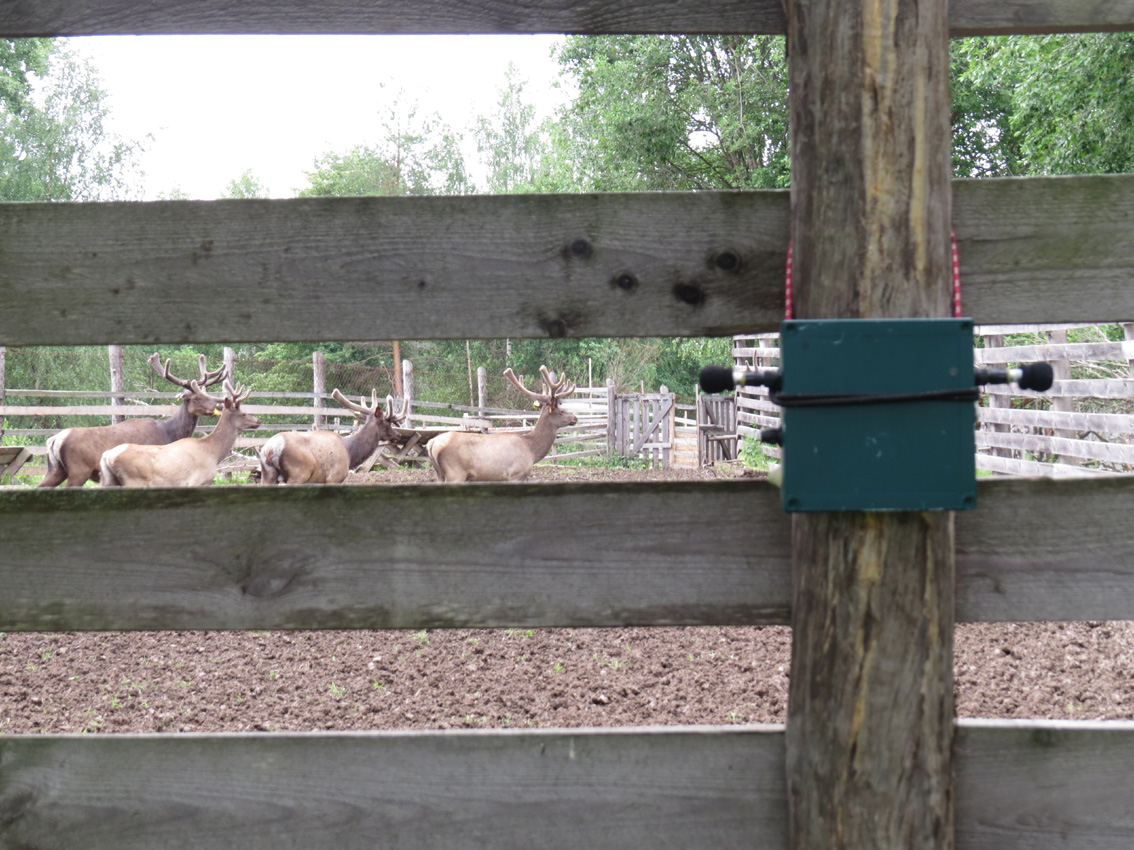
4. The automated unit for the acoustic recordings.
To date, we collected calls of Siberian wapiti with the automated units for the acoustic recordings. However, the analysis of recordings showed that the acoustics are indistinguishable between hinds and calves. That is, impossible discriminate adults and young by their calls! To investigate this surprising natural phenomenon, is necessary to make recordings with hand-held microphones, when a researcher sees who is the particular caller: hind, stag or calf.
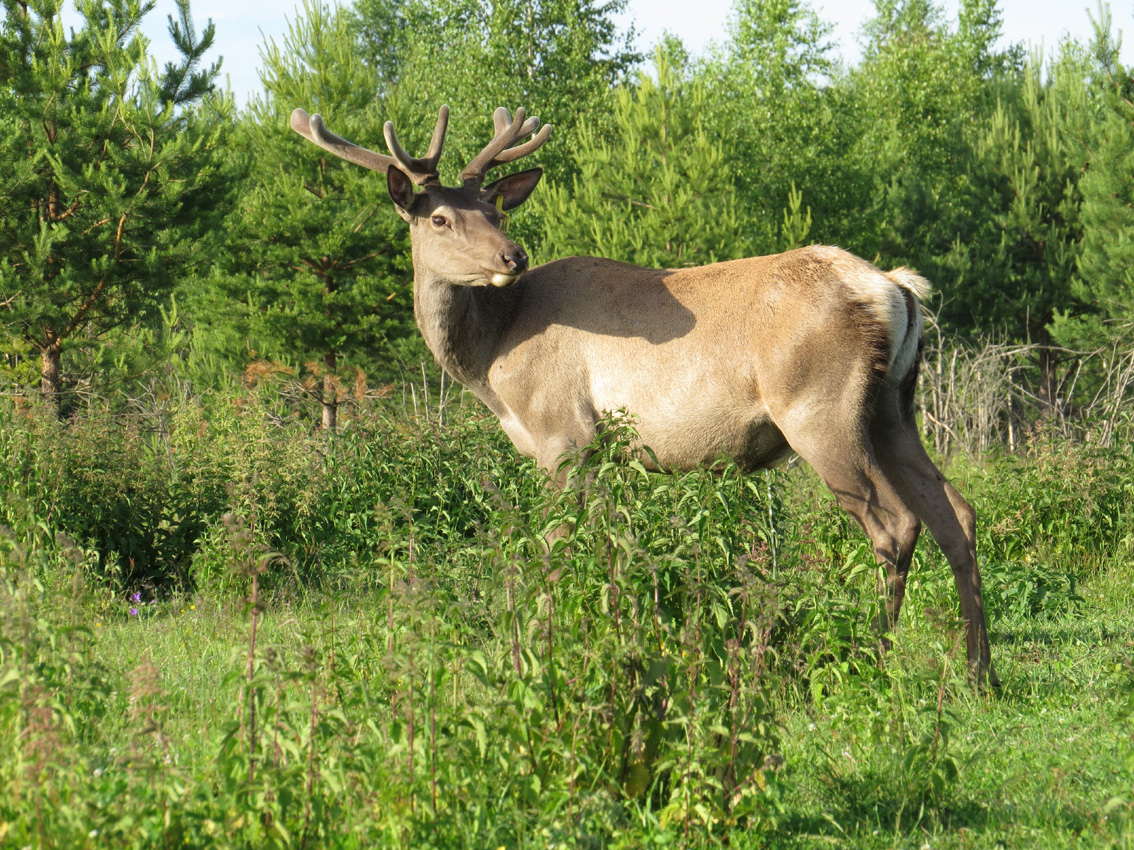
5. The Siberian wapiti stag with velvet antlers.
In June, stags bear velvet antler and practically silent. We only could record their scarce soft contact calls, when a few stags were together in the smaller enclosure. However this was a small discover, as previously contact calls were documented only in hinds and calves!
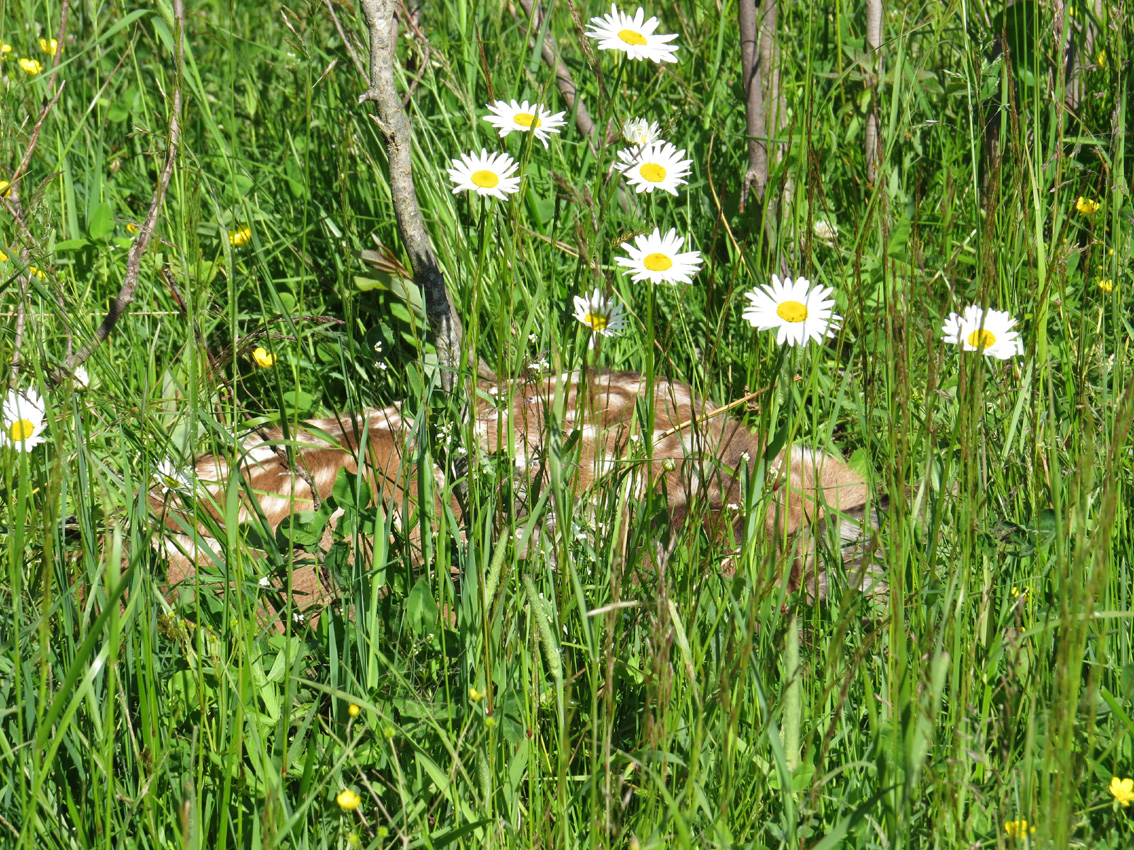
6. The newborn calf is practically invisible in the high grass.
June is the calving season in red deer. Hinds hide their newborns in the high grass and go grazing. To understood what this variegated can be, is necessary to come close.
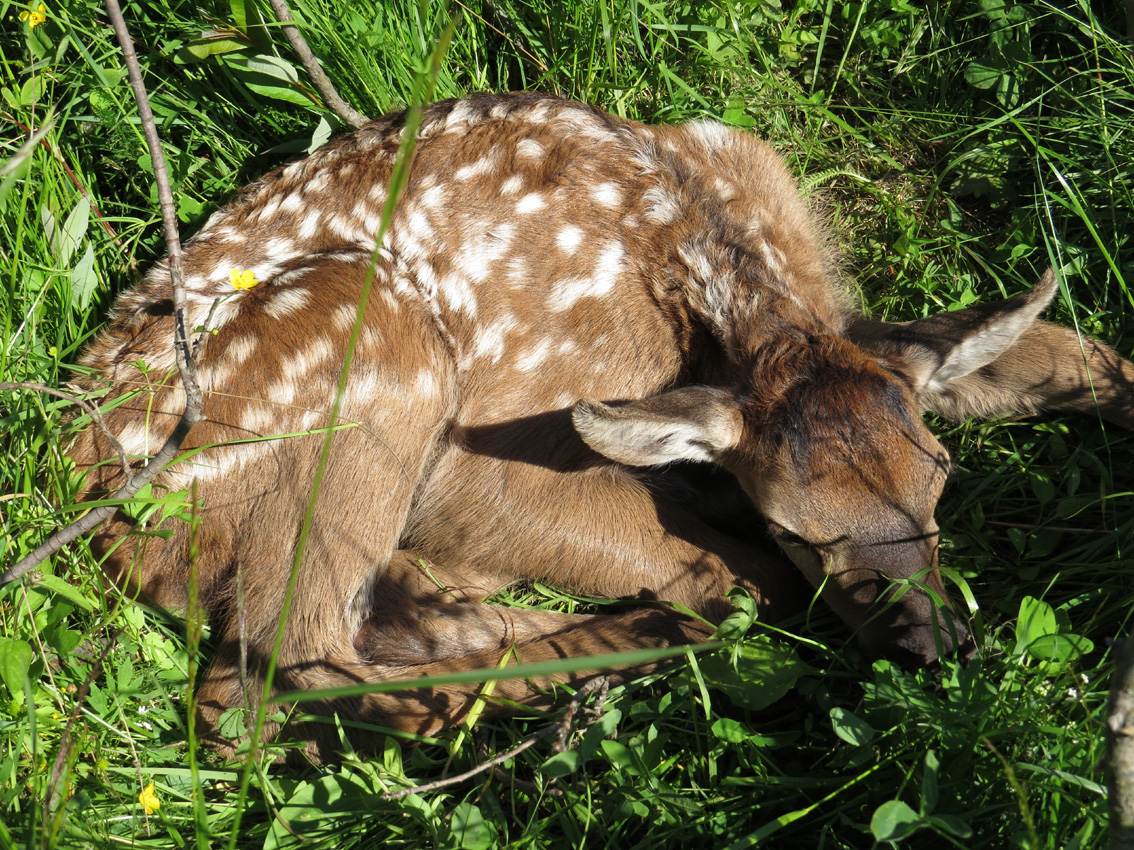
7. The hidden calf.
Within a few days after birth, a deer calf lies very calmly to be unnoticeably by predators and do not spend much energy.

8. The hind is remembering the hiding place of her calf.
In case if a calf stays nearby the place where a mother left it, their re-join occurs without calls. The hind approaches silently, and the calf also silently approaches her and suckles the milk for a few minutes.

9. The calf stood up to look for its mother.
Otherwise, if the mother do not return too long and the calf is hungry, it stands up emitting soft contact calls, helping its mother to find it. The mother responds with loud contact calls. Cervus_elaphus_sibiricus3_female_oral.wav
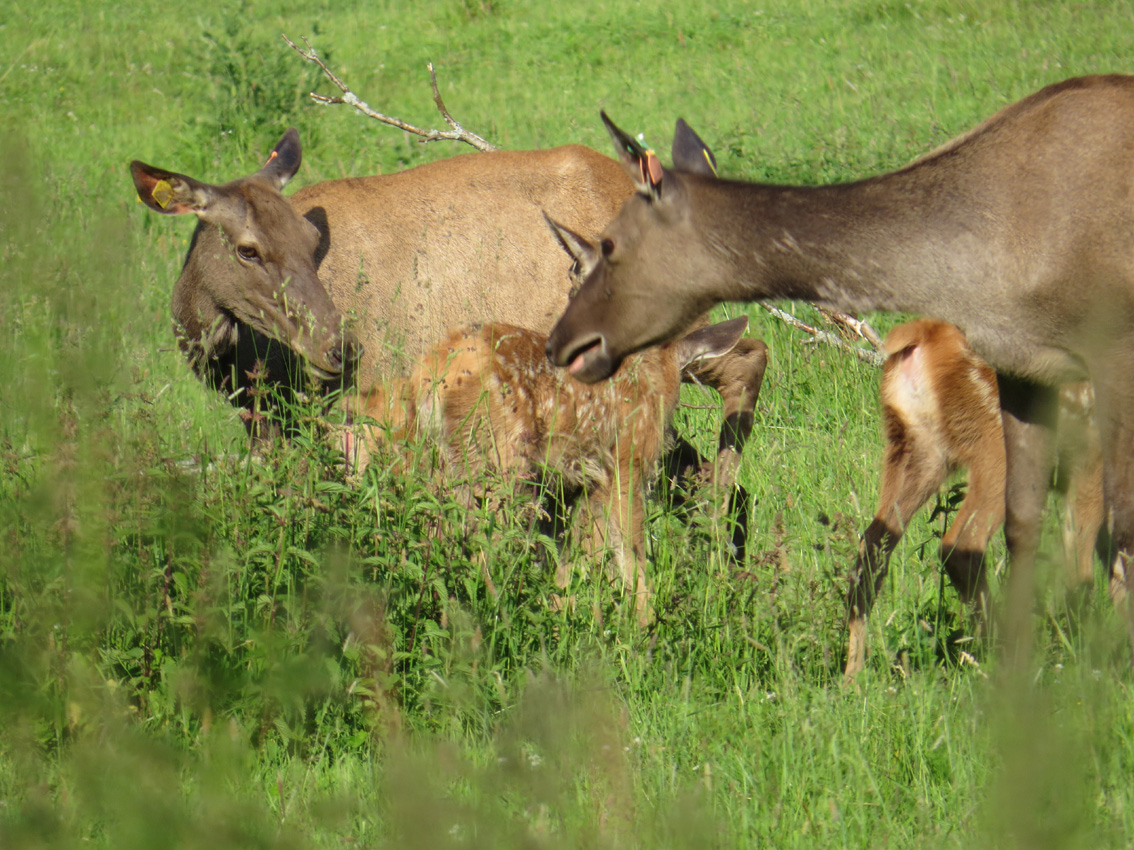
10. Hinds with their young.
When a calf and its mother detect each other, the hind sniff it carefully to ensure that this is indeed her calf. She will not nurse an alien calf, because a natural selection works against such expense of breast milk. The allosuckling occurs only in enclosures with high density of animals, and only when food is in plenty.

11. Running calves.
Calves older 7-10-days follow a herd. They are already quick runners, so the predators cannot catch them so easily.
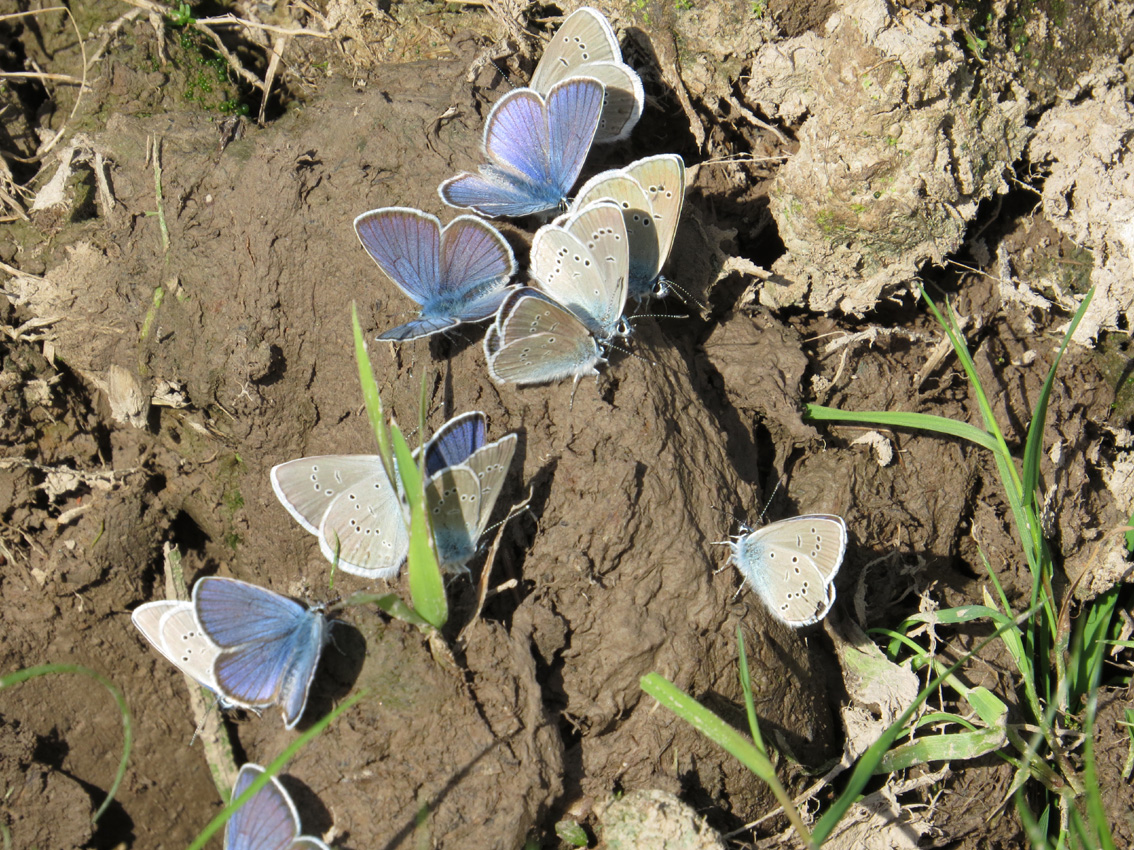
12. Butterflies at deer water post.
There are many living things besides the deer in the large deer enclosures; the ecological environment restores here.
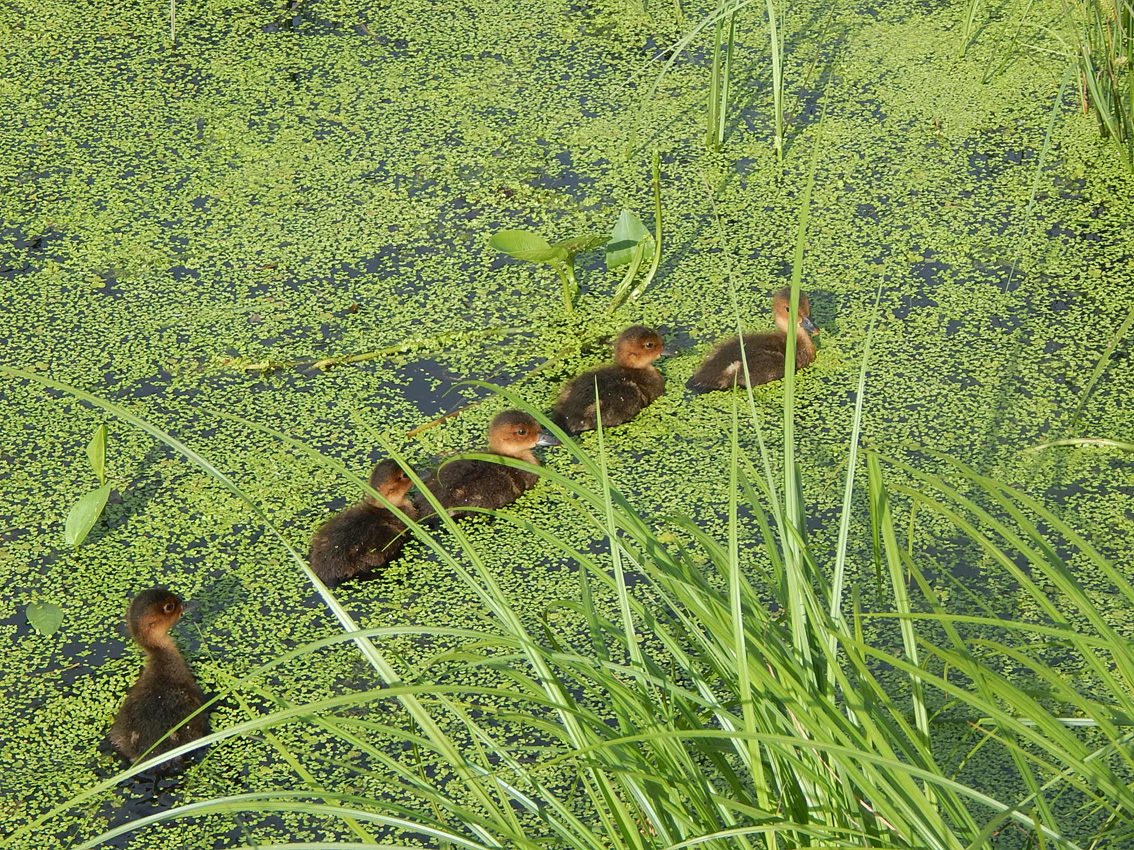
13. Mallard ducklings on the surface of a small water pool.
Soils here are clayish, and water-bearing beds lay very deep. So, numerous small water posts for deer attract various pre-water birds.
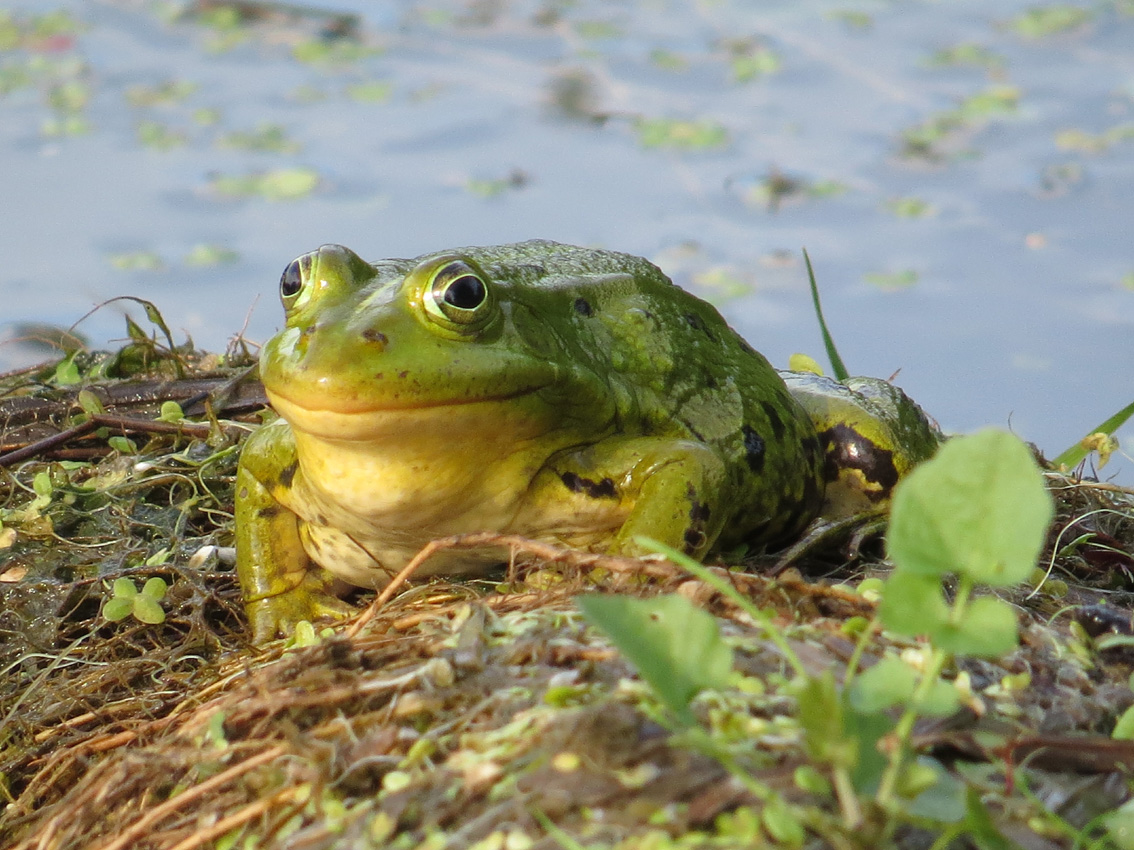
14. The frog.
Frogs climb out of water to water plants and woods to heat and to look around. There is a great amount of tadpoles in water.
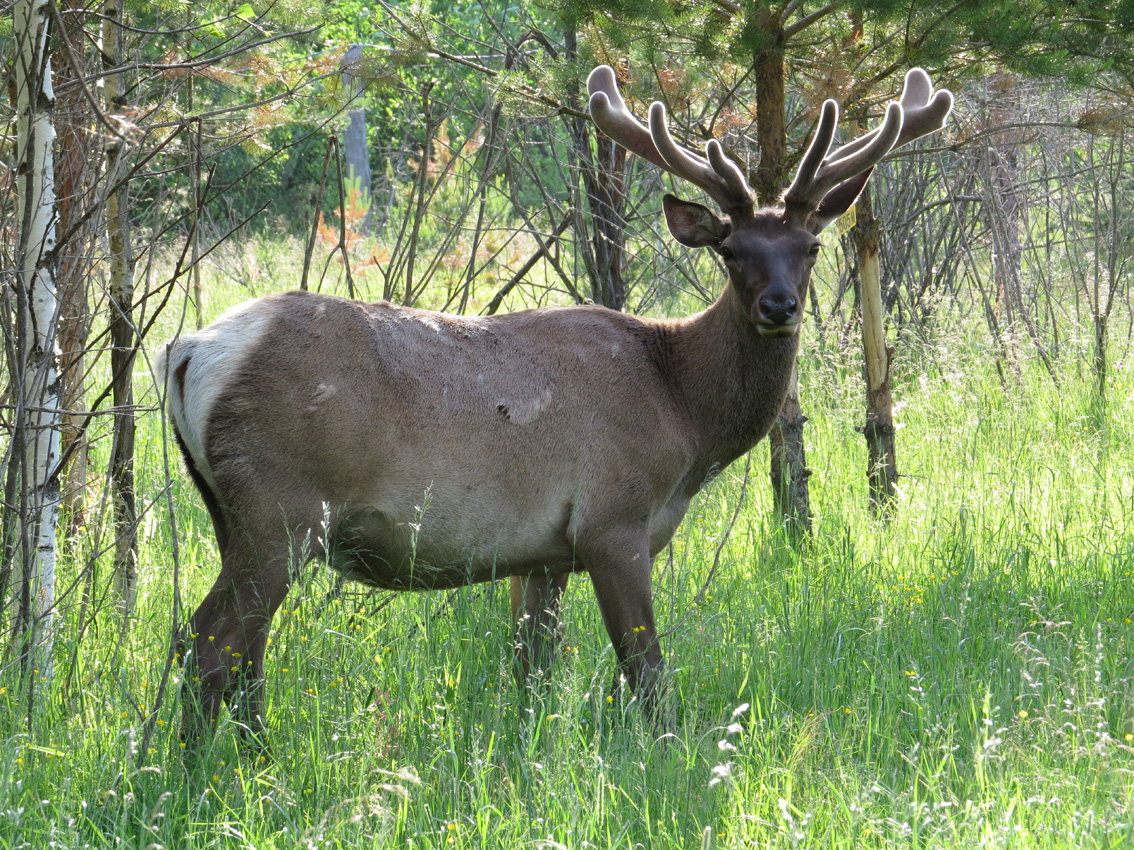
15.The Siberian deer stag.
In June, stags are non-aggressive and allow approaching and taking pictures. In September, before the rut entering in their enclosure would be dangerous, as the actively defend hinds against each other and even of humans.
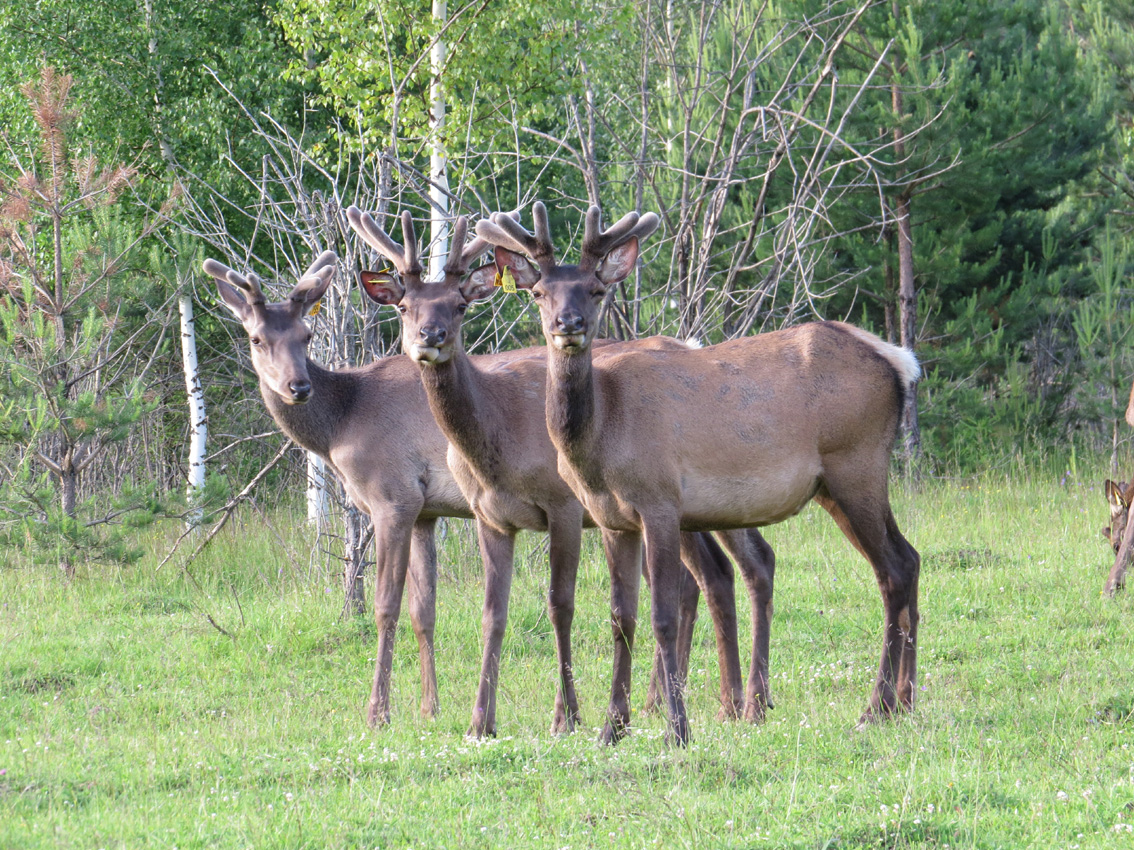
16. The group of three stags.
Mostly, Siberian wapiti stags walk in small groups.
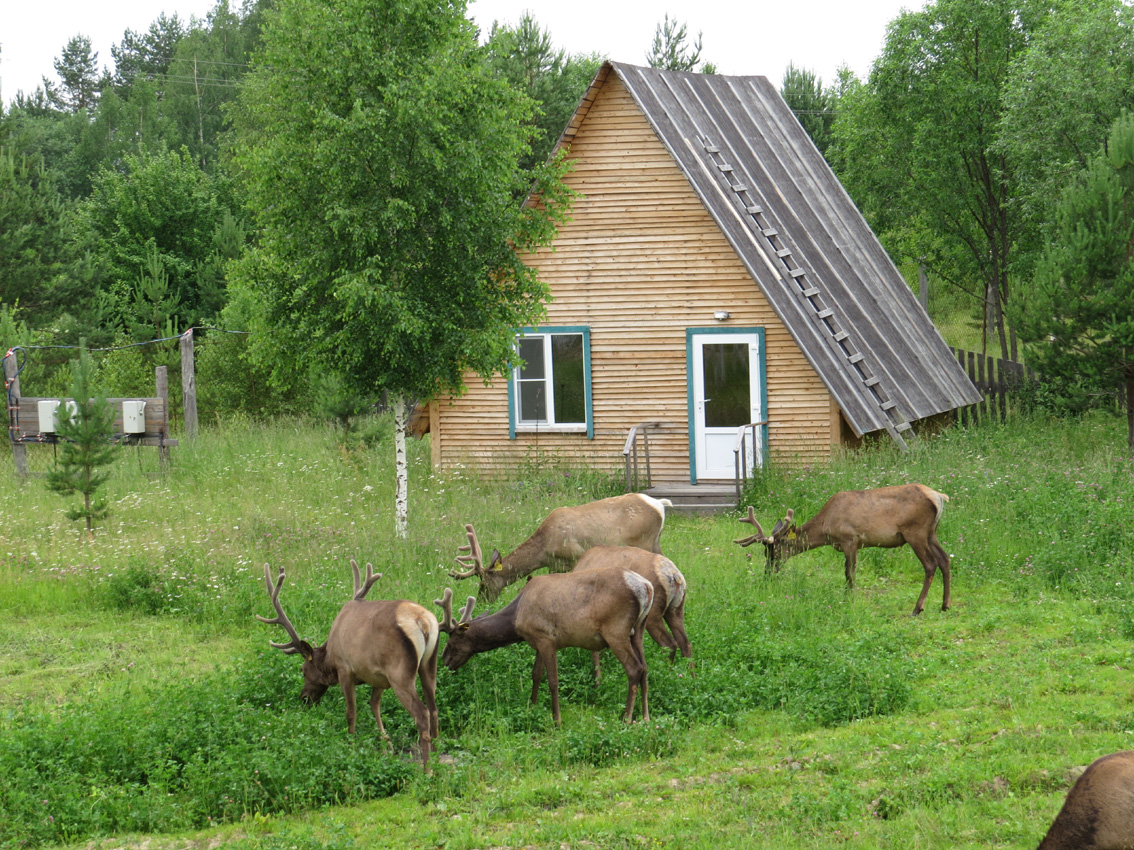
17. Grazing stags.
Many Siberian wapiti stags do not afraid of people at all and approach close to houses, being attracted with growing there fresh grass.

18. Calves at dawn.
As a rule, the calves follow a herd only early in the morning. Closer to the midday they lay down at herd periphery and rest.
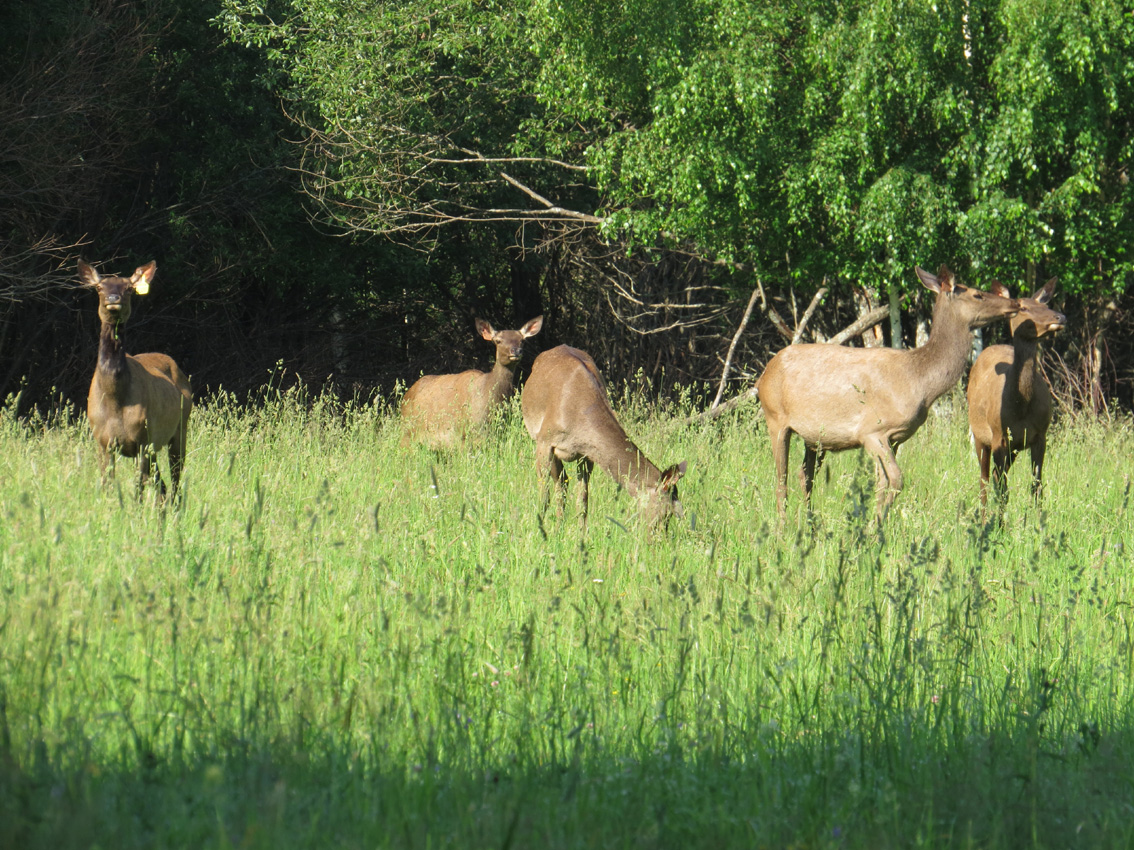
19. Grazing hinds.
At the same time, hinds continue grazing up to the midday heat. Lactation needs energy, so the hinds need much food.
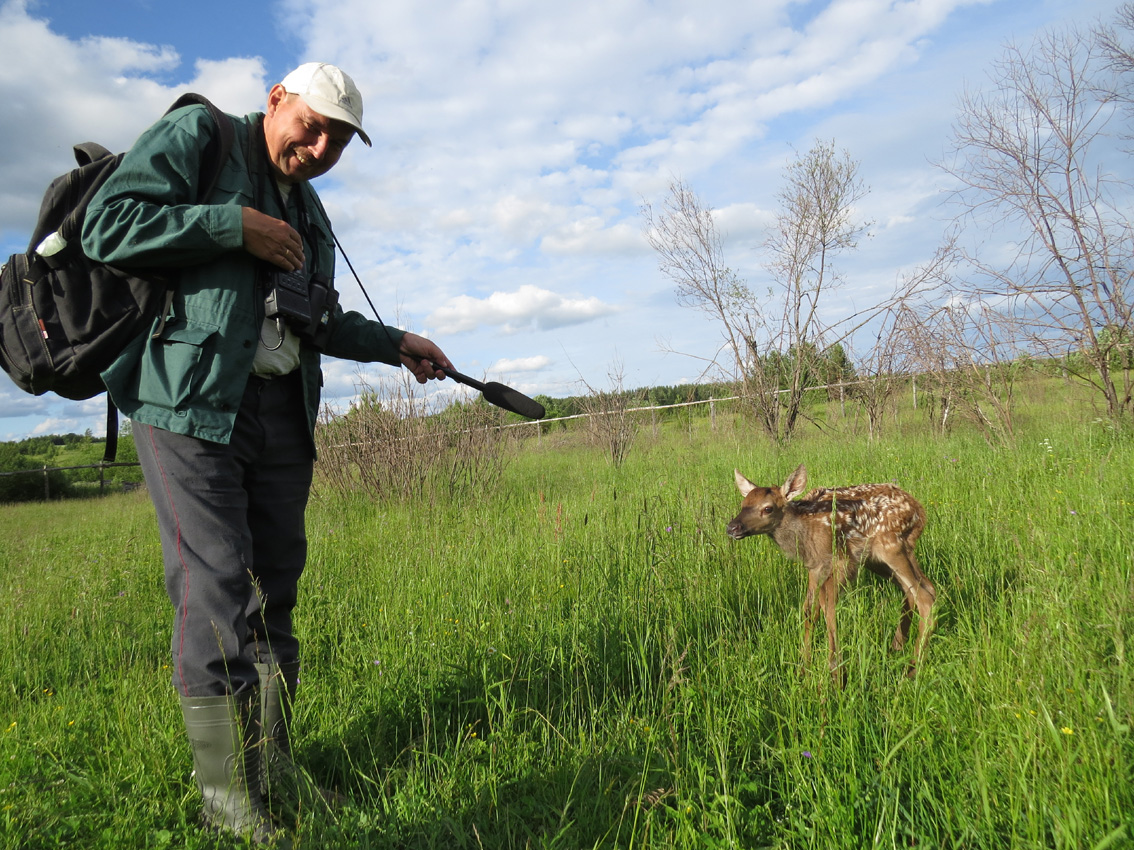
20. Acoustic recording of calf contact calls.
This newborn calf considered approaching researchers were its mother, and stood up from the grass. Calls it produced, were recorded by the researchers. Recordings, made when the caller is in direct visibility, allow to proof that vocalization of newborn Siberian red deer indeed indistinguishable in pitch from calls of adult females. Previously, such bizarre things were found in very few small mammals: ground squirrels and shrews, but were not found in any large mammal. Instead, in most mammals, including humans, calls of the young are substantially higher-pitched than those of adults, because of the shorter vocal folds of the young.
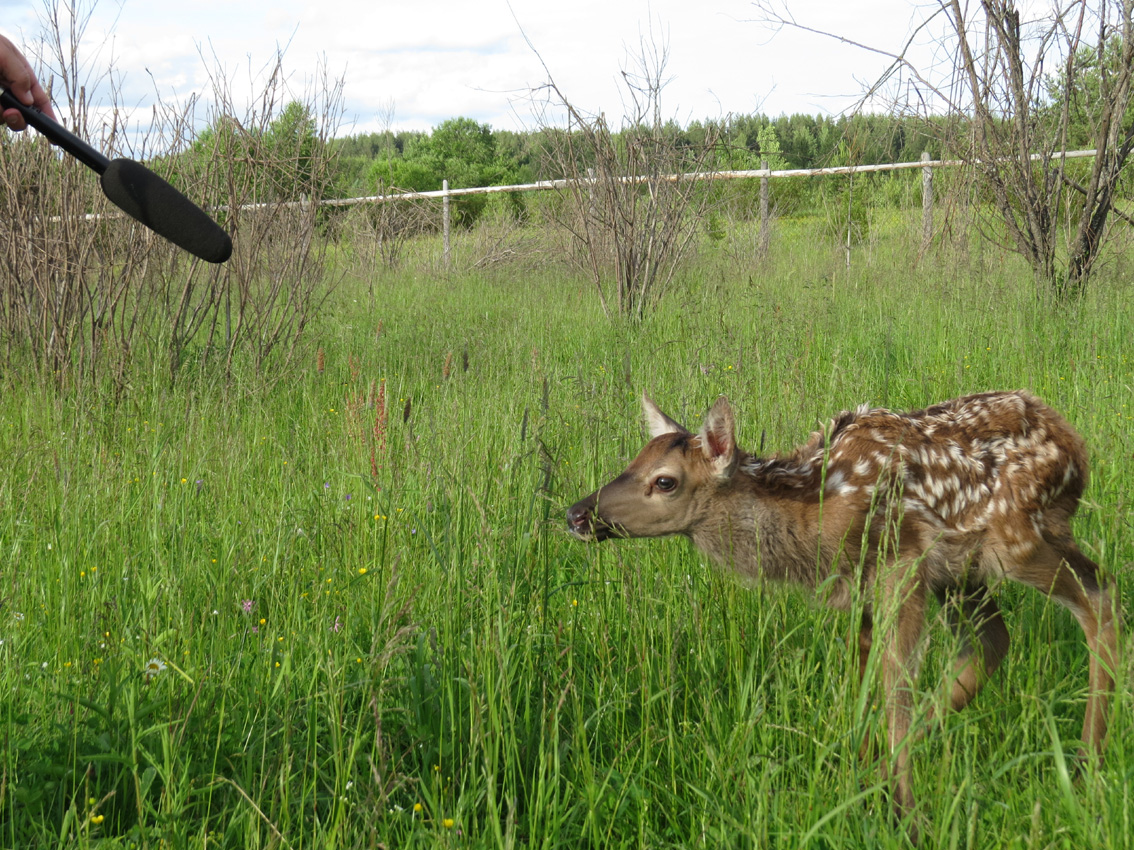
21. "Interviewing" the calf.
The recording at shorter distance provides calls of higher quality. Although calf calls share the acoustic structure with contact calls of adult Siberian wapiti, they are, as a rule, much softer, because of less lung volume in the young compared to adults. Cervus_elaphus_sibiricus4_calf.wav

22. Participation of students in data collection.
Young researchers: students of Lomonosov Moscow State University and simultaneous members of Young Zoo Biologists Group, collect material together with senior researchers. By Moscow Zoo tradition, the members of Young Zoo Biologists Group never leave this community, even when become the students.
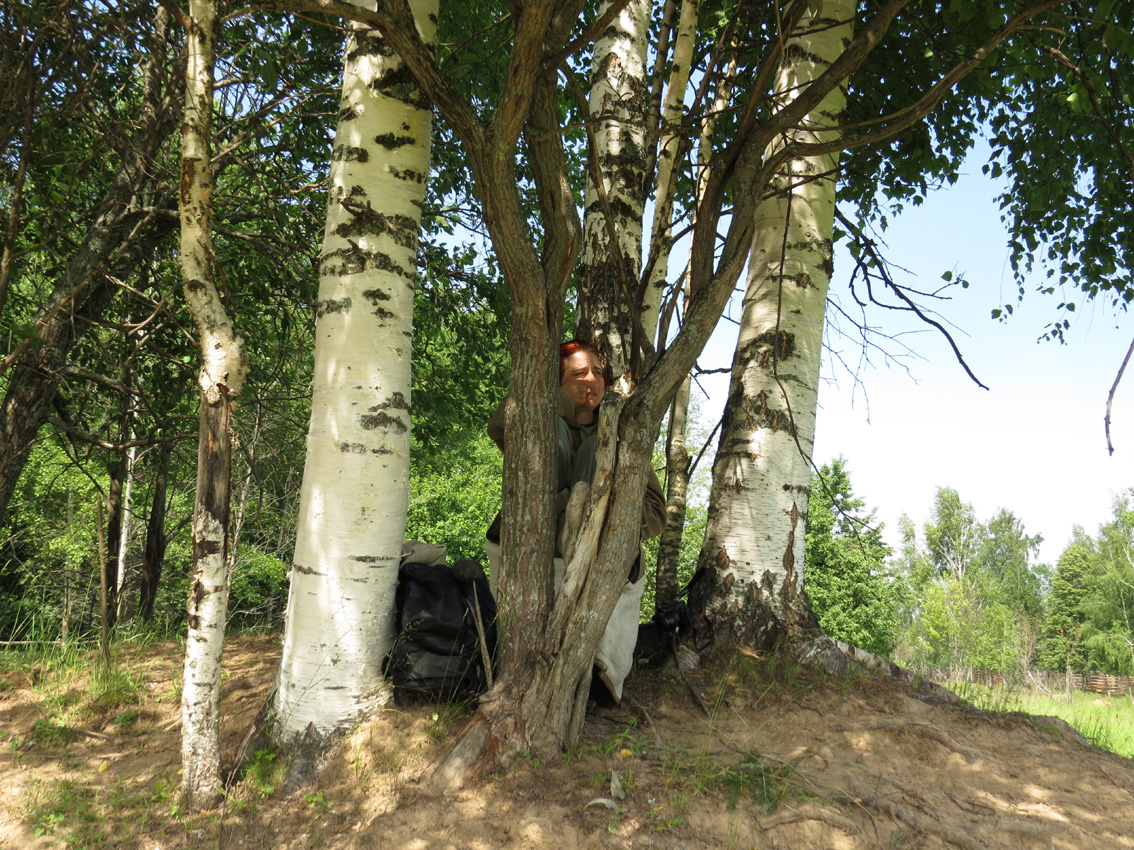
23. Data collection from the hide.
Only neonate calves do not afraid of researchers. Calls of older calves and of their mothers are better to record from the hide; in this case behaviour is more naturalistic.

24. Corncrake female.
Although corncrake calls from the high grass often overlap calls of the Siberian wapiti, to see these birds is practically impossible. To see a female corncrake is still more difficult. Nevertheless, when sitting in the hide for a long time, observing the deer, one can see apparently impossible things. Crex_crex1_male.wav
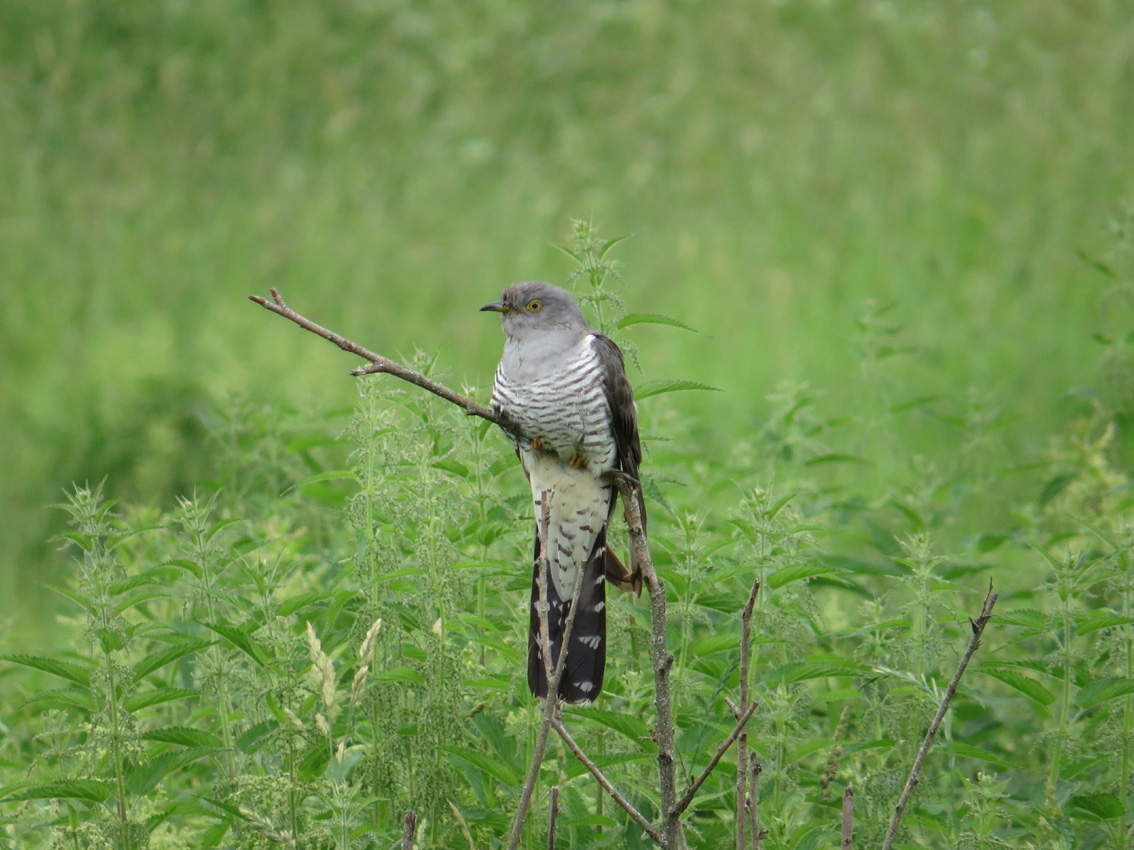
25. The cuckoo.
The cuckoo is easier to hear than to see. This cuckoo catches insects and rests on dry twigs among nettle bushes. Sometimes, small birds chase the cuckoo fiercely. They afraid ant the cuckoo will lay her eggs in their nest, as it is a famous nest parasite.

26. Hatching forest bugs.
These red spots are forest bugs. The weather is warm and wet, and it's time for them to hatch.
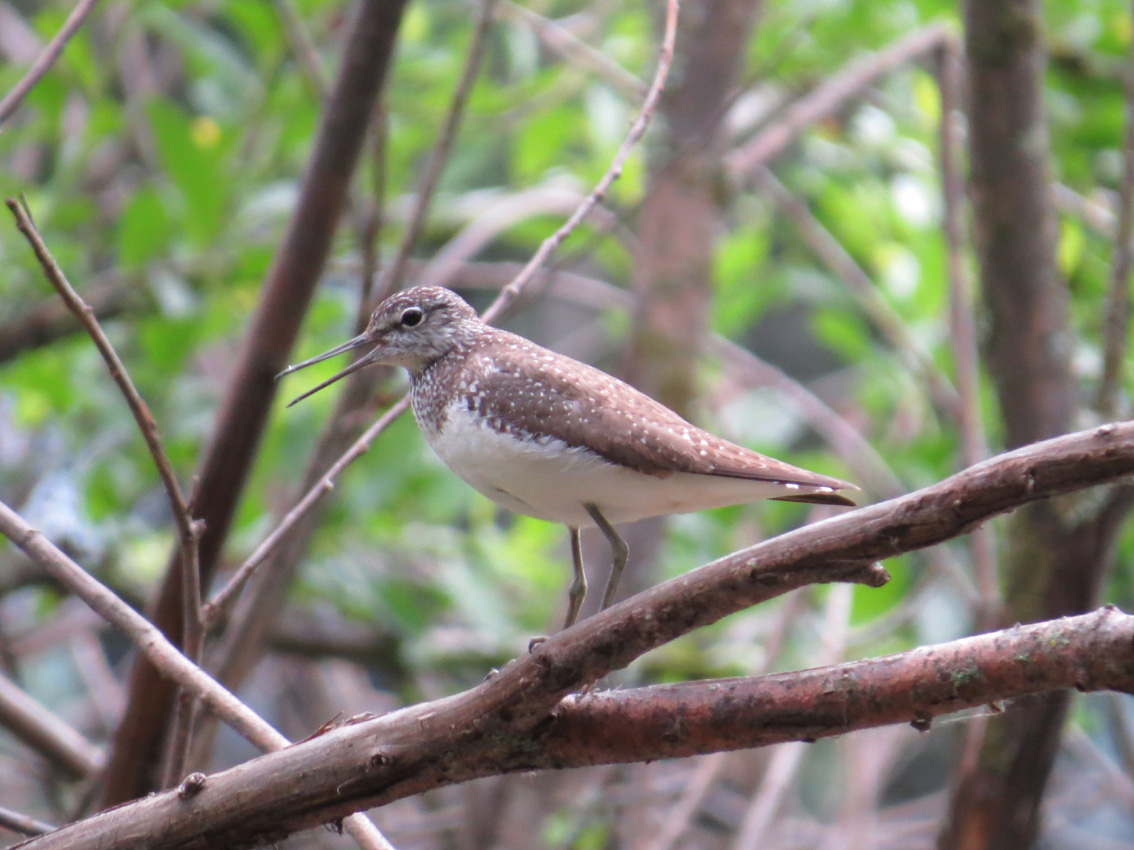
27. The wood sandpiper.
Passing by enclosure after observations, one can see the mobbing wood sandpiper.. Tringa_glareola1_mobbing.wav
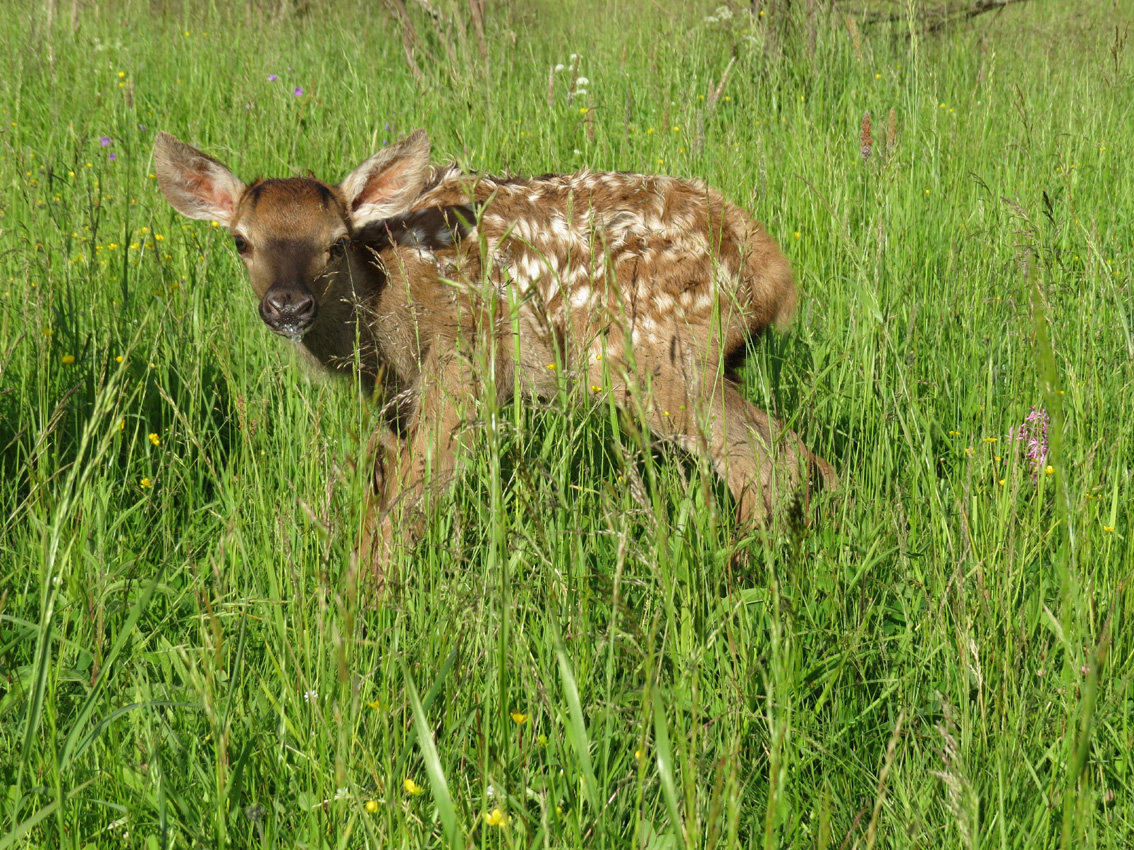
28. The calf standing.
Another calf stood up from the grass.
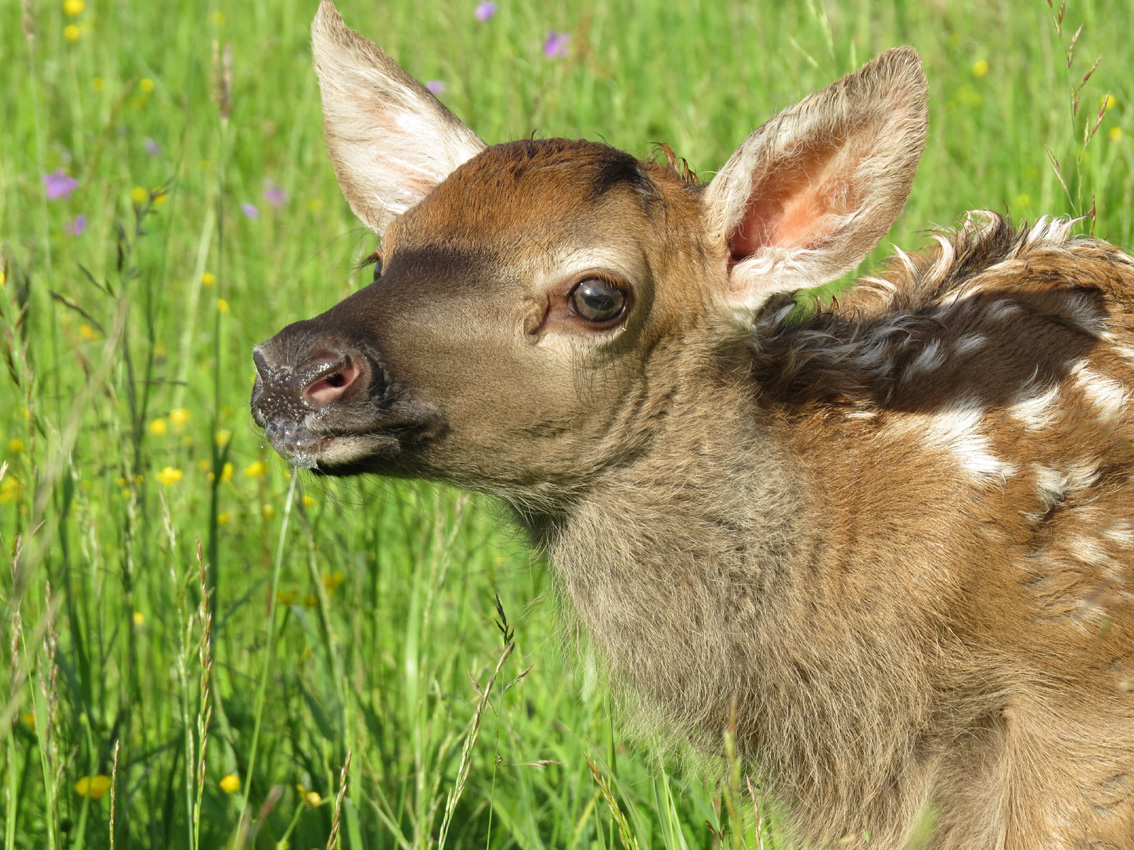
29. The calf close-up.
The Siberian deer calf has a very large eye gland, whose secret in many ungulates is used for marking behaviour. The curled hair on the neck back suggests that this is a neonate calf; as in the older ones the neck hair is smooth.

30. After observations.
Today was lucky day, including interesting meetings with wonderful animals, qualitative acoustic recordings, and sunny weather. Although clouds of mosquitoes were flying around with loud buzzes, which was recorded together with the wapiti calls. Would be good repeating this tomorrow!
|

